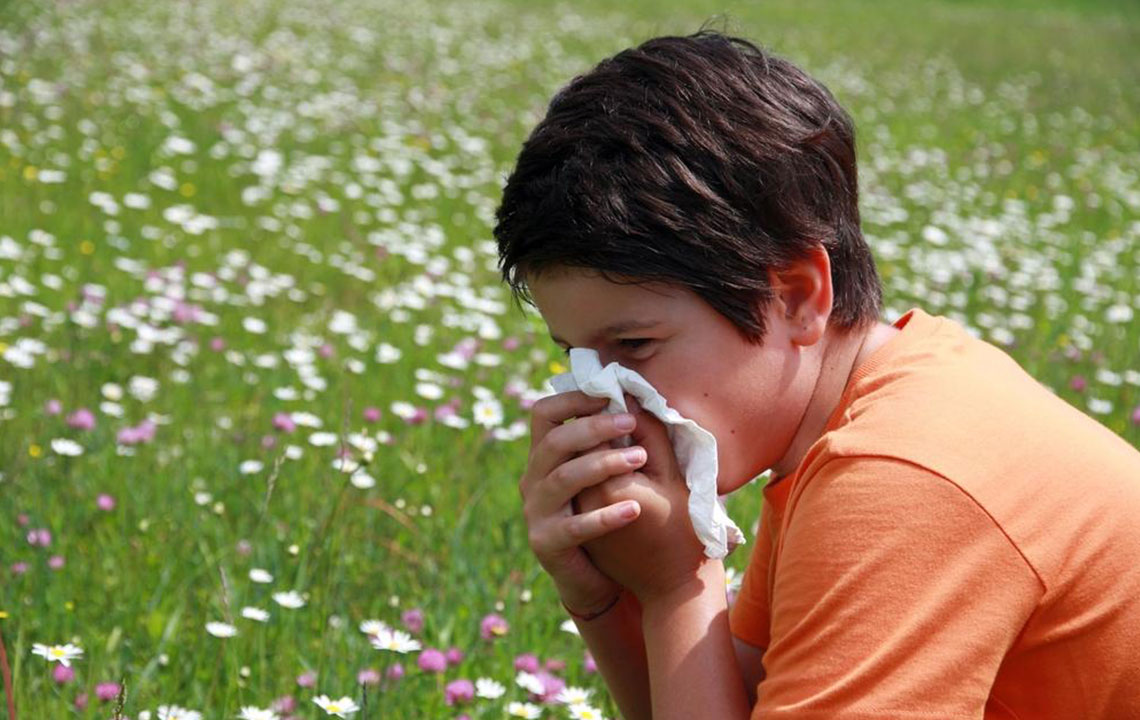In-Depth Guide to Allergic Conjunctivitis: Causes, Symptoms, and Effective Treatments
This comprehensive article explores allergic conjunctivitis, detailing its causes, symptoms, and various treatment options. It covers the differences between seasonal and perennial allergies, the underlying triggers, and effective strategies to manage symptoms. Whether you're dealing with mild irritation or severe allergic reactions, understanding these aspects can help you seek appropriate care, prevent complications, and maintain healthy eyesight. Proper management of eye allergies is crucial for overall eye health and daily comfort.

In-Depth Guide to Allergic Conjunctivitis: Causes, Symptoms, and Effective Treatments
Experiencing occasional eye watering is common and can often be managed with over-the-counter remedies. However, persistent watery eyes caused by allergic reactions—known as allergic conjunctivitis—can be quite bothersome and require specific attention. This condition leads to involuntary tears flowing from the eyes, often accompanied by redness, itching, and swelling. Understanding the underlying causes, identifying the triggers, and exploring effective treatment options are essential steps toward relief. This comprehensive guide delves into the causes, symptoms, types, and remedies for allergic conjunctivitis, equipping you with vital information to better manage your eye health.
What Causes Watery Eyes?
Watery eyes, or excessive tearing, can result from various factors. Although sometimes associated with dry eye syndrome, which paradoxically causes the eyes to produce more tears due to irritation, there are several primary causes for persistent watering. Here, we explore the typical reasons behind this condition.
Obstruction or narrowing of the tear drainage system: This issue often stems from repeated mild infections or chronic inflammation in the eyes, leading to a blockage in the tear ducts. When tear drainage is impeded, tears cannot drain properly, causing them to overflow and result in watery eyes. Such blockages can be congenital or acquired through trauma or infection.
Tear duct infections: Ongoing infections can cause swelling and damage to tear ducts, leading to inadequate tear drainage and watering.
Dry eye syndrome: Surprisingly, dry eyes can trigger excess tear production as a compensatory response to irritation. This overproduction can result in a constant sense of wetness or watering.
Congenital or partial duct obstructions in infants: Some babies are born with incomplete development of their tear drainage systems. These cases often resolve naturally as the child grows, but sometimes require medical intervention.
Understanding Eye Allergies
Eye allergies are a protective reflex designed to eliminate irritants from the eyes. When exposed to certain triggers, the eyes overreact, leading to symptoms such as watering, redness, itching, and swelling. These allergic reactions are caused by an immune response wherein the body identifies harmless substances as threats, leading to inflammation and increased tear production. Recognizing what causes these allergies is vital for effective management.
Common Triggers of Eye Allergies
Multiple factors can provoke allergic reactions in the eyes. Identifying and avoiding these triggers is the first step toward relief.
Chemicals: Household and environmental chemicals like onion fumes, strong cleaning agents, or industrial pollutants can irritate the eyes and trigger allergic responses.
Infections: Conjunctivitis, often caused by bacteria or viruses, can cause eyelid swelling, redness, and watery discharge, mimicking allergy symptoms.
Specific allergens: Allergic conjunctivitis stems from pollen, mold spores, pet dander, dust mites, or other allergens that provoke immune responses.
Physical trauma: Inscriptions or scratches near the eye can cause inflammation and trigger reactions similar to allergies.
Irritants: Dust, dirt, grit, or foreign particles entering the eye can initiate allergic-like reactions and inflammation.
Eye abnormalities: Conditions such as entropion (inward-growing eyelashes) can cause irritation and allergic responses.
Types of Eye Allergies
Allergic conjunctivitis presents primarily in two forms: seasonal and perennial. Understanding the differences helps tailor preventive measures and treatment strategies.
Seasonal Allergic Conjunctivitis: Usually associated with pollen, grass, weeds, and mold spores that are prevalent in certain seasons, especially spring and autumn. Symptoms tend to flare up during these periods and subside afterward.
Perennial Allergic Conjunctivitis: This form occurs year-round and is caused by continuous exposure to indoor and outdoor allergens like dust mites, pet dander, cigarette smoke, perfume, and air pollution. It often results in persistent eye discomfort and watering.
How to Manage and Treat Watery Eyes Due to Allergies
Managing allergic conjunctivitis effectively requires a comprehensive approach tailored to the specific causes. Here are various strategies and treatments that can help reduce symptoms significantly:
Avoidance of allergens: Minimize exposure by keeping windows closed during high pollen seasons, using air conditioning with high-efficiency filters, and regularly changing or cleaning filters in your home and car. Avoid dusty environments and stay indoors during peak allergy seasons.
Switch to glasses: Contact lenses trap allergens close to the eyes and can worsen symptoms. During allergy periods, opt for glasses or daily disposable lenses to reduce allergic reactions.
Over-the-counter (OTC) remedies: Use antihistamine eye drops or artificial tears to soothe irritation, reduce redness, and wash away allergens from the eye surface. These products provide quick and safe relief for mild symptoms.
Prescription medications: For severe or persistent symptoms, consult your healthcare provider. They may prescribe antihistamines, decongestants, or mast cell stabilizers to control allergic responses and inflammation more effectively.
Immunotherapy: For long-term relief, immunotherapy involves controlled exposure to specific allergens through allergy shots or tablets. This approach gradually desensitizes the immune system, decreasing sensitivity over time and reducing the frequency and severity of allergic reactions.
Protecting your eyes from potential irritants and adopting suitable treatment protocols can drastically improve quality of life. If symptoms persist despite these measures, seek advice from healthcare professionals to explore additional treatment options and ensure proper diagnosis. Remember, managing exposure and treatment early can prevent the progression of allergic conjunctivitis and preserve your eye health for years to come.





